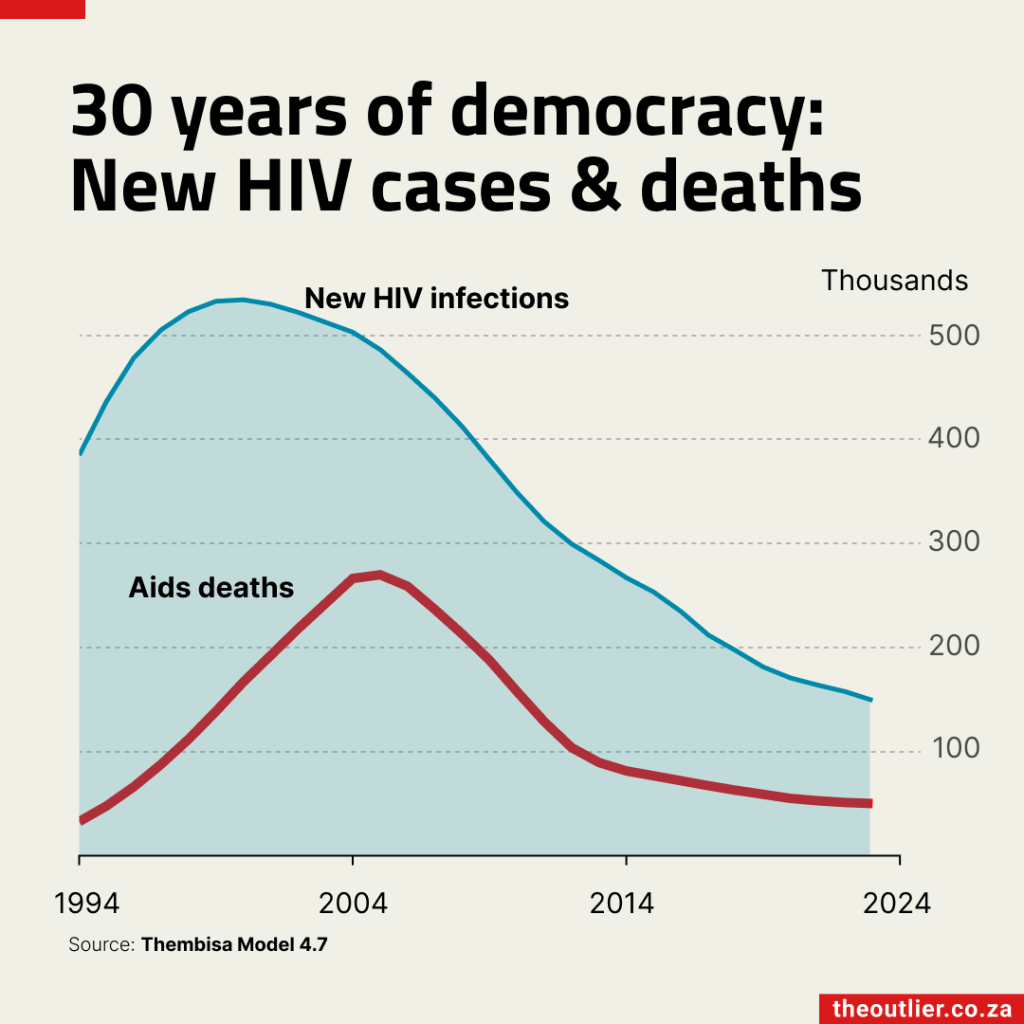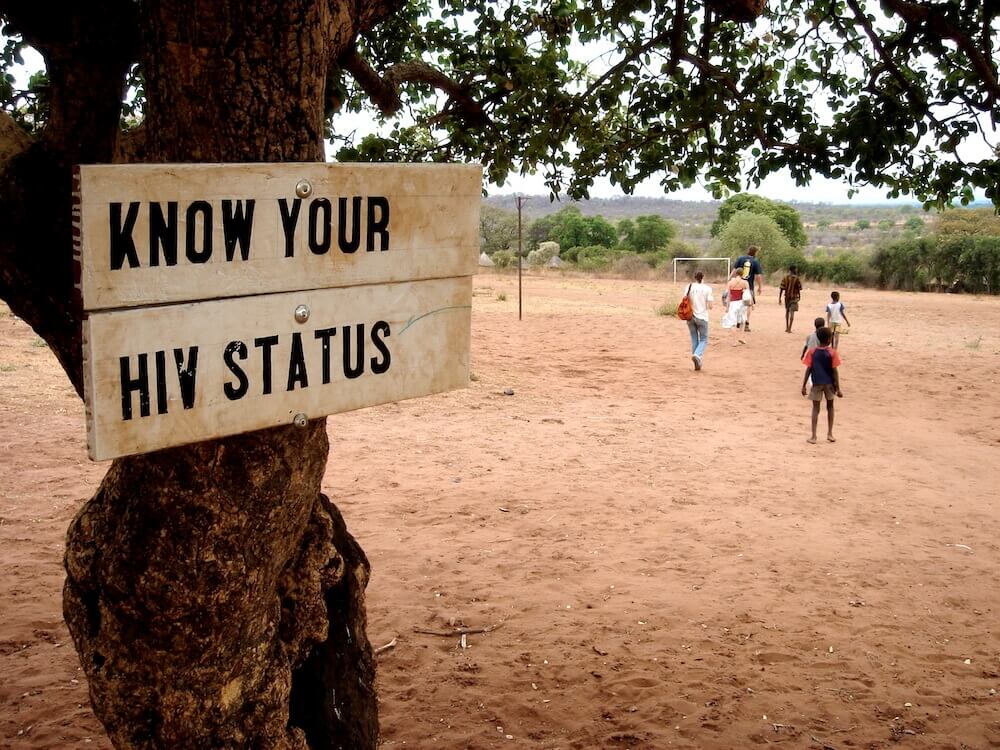
The HIV epidemic took a heavy toll on South Africa. The signs were there in 1994, when an estimated 380,000 people were newly infected with HIV. Six years later, new infections had risen to over half a million a year. All the while deaths from Aids were steadily increasing from an estimated 32,000 in 1994 to a heartbreaking 270,000 ten years later, according to data from the Thembisa model, developed to describe the HIV epidemic.
South Africa’s average life expectancy dropped from 62 years in 1994 to 54 years in 2004.
Since then, the country has made impressive progress in reducing Aids deaths thanks to a massive rollout of antiretroviral medicines in the public health system which started in 2004.
In 2024 there are an estimated 7.8-million people living with HIV in South Africa – 3-million more people than in 2004, yet Aids deaths have plummeted and are close to the level they were 30 years ago.
Average life expectancy in South Africa has risen to 66.2 years in 2024, so people are living on average 4 years longer now that they were in 1994.
An estimated 5.86-million people who are living with HIV were on antiretrovirals at the end of 2023. The government spends R30-billion a year combatting the HIV epidemic.
